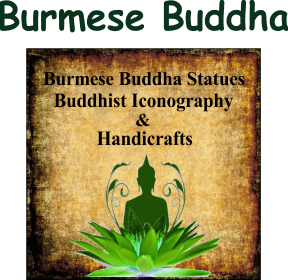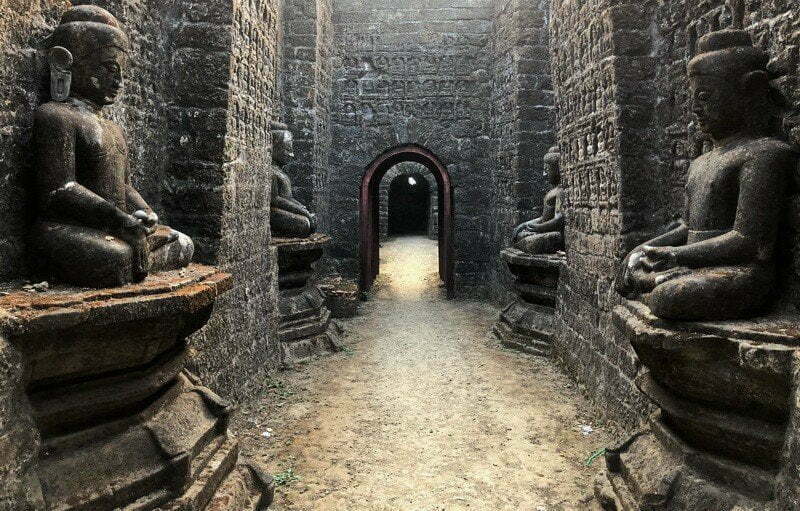Koe-Thoung Temple Mrauk-U
Koe-Thoung Temple Mrauk-U was built by King Tikkha, the son of King Mong Bar Gri, a donor of Shite-thaung Temple. Due to its size Ko-Thoung Temple is referred to as the Rakhine Borobudur, although this temple is not as large as those found in Indonesia, it is the largest temple complex in this ancient capital of Mrauk-U in Rakhine State, reputed to have originally housed around 90,000 Buddha images.
The temple donor King Mong Taikkha Mong Diyar, also referred to as King Tikkha or Dikkha ruling between 1553-1555 was the son of King Mong Ba Gree also known as King Min Ba Gyi or Min Bin, who ruled between 1531 and 1553, and donor to the building of the spectacular Shite thaung temple.
Due to Koethaung Temple’s size, measuring 230 feet from east to west and 250 feet from north to south, and its closeness to Shite Thaung Temple it is referred to as the “Rakhine Borobudur”, although this temple is not as large as those found at the Borobudur site in Indonesia, it is the largest temple complex in the ancient capital of Mrauk-U.
Koe Thaung Temple in Mrauk-Us inner chambers encompass a series of carved Buddha statues, each with individual facial details, they rest in a niche partially covered in green lichen adding a timeless quality. According to the locals, there were formerly nine terraces, but most have collapsed over the centuries from the weight of all the statues, although it is more likely due to earthquakes and was only discovered during the 1980s, covered in thick vegetation and excavation came some years later.
The temple on first appearance looks like a fortress with layered stone terraces, on top there are rows of sandstone columns resembling hundreds of Buddhist stupas, one hundred and eight to be precise. There is only one large pagoda in this imposing structure. Koe Thaung temple has four entrances, one on each cardinal point. The main entrance on the east side leads into a long vaulted passageway, spiralling around until reaches a central chamber. Large Buddha statues seated on tiered stone pedestals line the vaulted passageway at intervals on both sides.
The construction of Koe thaung Temple is likened to a rock cave tunnel. The main tower above the pagoda is octagonal in shape. The temple unlike the Shite Thaung temple which is made from pure sandstone, Koe Thaung is made of a mix of sandstone and bricks and is of a lesser quality than that of the Shite Thaung.
The prophecy foretold that the donor of this Temple King Tikkha would die six months after his coronation. On the advice of his advisers, and in order to fulfil a part of Yattara, magic to ward off misfortune, performed by spirit mediums, also referred to as Nats, the King then moved his palace to a new site and built a temporary palace near the eastern side of the pagoda hill. Koethaung Temple remained unfinished.
King Tikkha’s succeeded his father in 1554 and bore witness to the country’s importance as a major power. During his lifetime, both before, and after he succeeded his father he proved himself to be an excellent military commander who led the Arakanese navy during his father’s attempted conquests of Bengal and Tripura between 1532 and 1534, aided by Portuguese mercenaries, their navy and weapons.
Legend and Myth Related to Koe Thaung Temple
It is generally believed by the locals that there are many hidden treasures still buried under the ruins. Legend also says that the temple was demolished and hit by a thunderbolt because the King built the temple with 90,000 Buddha images, which exceeded that of his father’s temple the Shite Thaung’s which housed 80,000 Buddha Images.
An article from The Irrawaddy illustrates the current situation today of this wonderful historic and archaeologically interesting and valuable area, which hopefully will not be lost to the world.
We feel very fortunate to have had the opportunity to visit Mrauk-U in more peaceful times and wish all the people of Rakhine live in peace and harmony.







